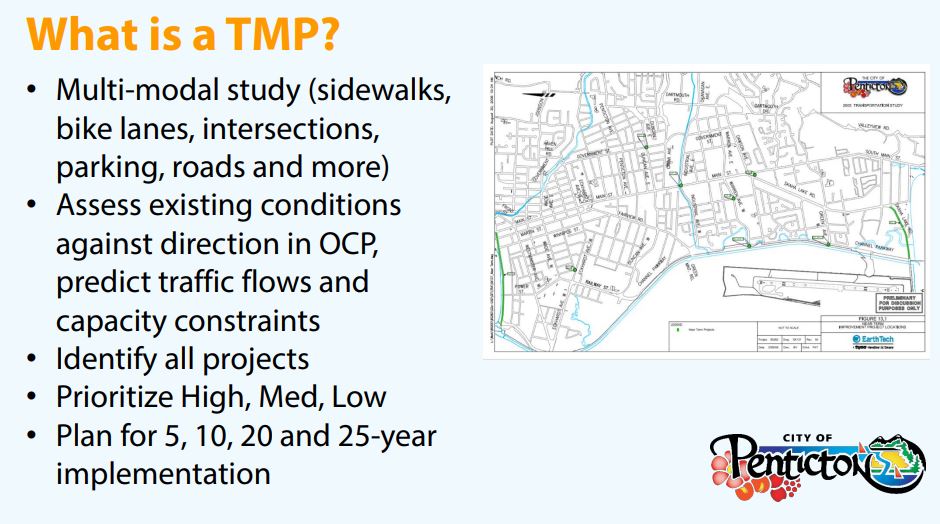The purpose of the Transportation Master Plan (TMP) is to create and manage a safe transportation system that supports all ages, abilities and modes of transportation, helps meet environmental objectives and uses infrastructure responsibly.
The TMP was developed in 2021 as part of a comprehensive review of the City’s master plans to align with and support the 2045 Official Community Plan (OCP). The policy prioritizes the design, investment and renewal of transportation infrastructure according to the following hierarchy. Scroll down for further details about each of the six priorities.

Six Key Priorities
The Transportation Master Plan prioritizes the following six areas in this order.
Maps of Existing and Future Priorities
About the Transportation Master Plan
Related Pages
Contact Us
To make a suggestion or report a concern, please use our online form.
Engineering Department
Phone: 250-490-2521
Email: engineering@penticton.ca



